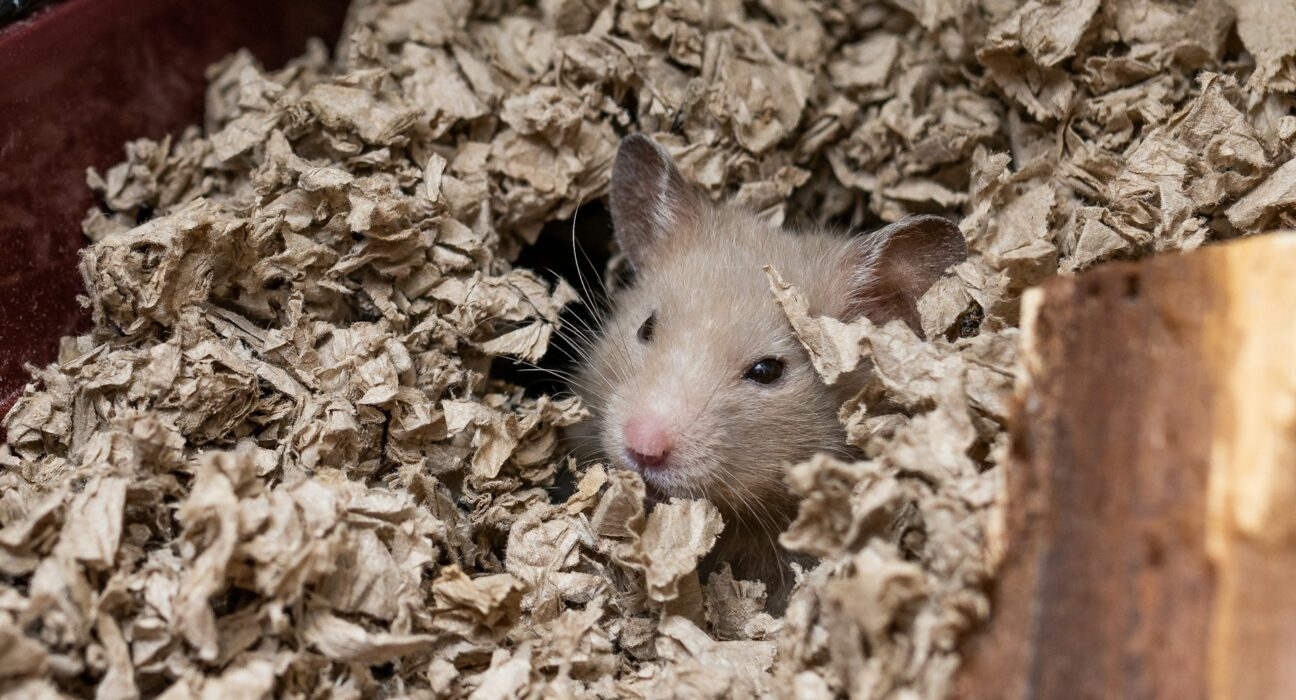Imagine this – you’re sitting in your living room, enjoying a peaceful evening with your family, when suddenly, you hear a scratching noise coming from the walls. You ignore it at first, but soon enough, you spot a tiny rodent scurrying across the floor.
For many homeowners, this is a nightmare scenario. Rodent infestations are not only unsettling, but they can also pose serious health risks and cause significant damage to your home.
Rodent control is a crucial aspect of maintaining a safe and healthy living environment. Whether you’re dealing with mice, rats, or other pesky invaders, knowing how to effectively manage these critters can save you time, money, and stress.
In this comprehensive guide, we’ll explore the most effective rodent control strategies for homeowners. We’ll cover everything from identifying the signs of an infestation to implementing home pest solutions and preventative measures.
By the end of this post, you’ll be armed with the knowledge and tools to tackle any rodent problem that comes your way, and you’ll even learn about ticks removal as a bonus.
Identifying Signs of a Rodent Infestation
Visual Clues and Droppings
One of the first steps in effective rodent control is recognizing the signs of an infestation. Rodents are elusive creatures, so visual clues are often your first indication of their presence.
Look out for droppings, which are usually small, dark, and pellet-shaped. Rat droppings are larger than those of mice, so identifying them can help determine the type of rodent you’re dealing with.
Another visual clue is gnaw marks. Rodents need to constantly gnaw to keep their teeth from growing too long, so you may find chewed wires, furniture, or food packaging. These gnaw marks are often accompanied by greasy rub marks along walls and baseboards, caused by the rodents’ oily fur.
Unusual Noises and Smells
In addition to visual signs, pay attention to unusual noises and smells in your home. Rodents are nocturnal, so you might hear scratching, squeaking, or scampering sounds at night. These noises often come from hidden areas like walls, attics, or basements.
A musty odor is another indicator of a rodent infestation. This smell is typically caused by rodent urine and can become more pronounced as the infestation grows. If you notice any of these signs, it’s time to take action and explore effective home pest solutions.
Nesting Materials and Pet Behavior
Keep an eye out for nesting materials that rodents often forage from your home. They use materials like shredded paper, fabric, and insulation to build nests in secluded areas. If you find any unusual piles of these materials, it’s a strong indication of a rodent presence.
Additionally, observe your pets’ behavior. Cats and dogs have keen senses and may become unusually alert or agitated in areas where rodents are present. If your pet seems fixated on a particular spot, it could be worth investigating further.
Implementing Home Pest Solutions
Sealing Entry Points
An essential step in rodent control is sealing entry points to prevent them from entering your home. Rodents can squeeze through remarkably small openings, so it’s crucial to inspect your home thoroughly for potential access points.
Common entry points include gaps in windows and doors, cracks in the foundation, and openings around utility lines.
Use caulk or steel wool to seal these gaps, as rodents can’t chew through these materials. Installing door sweeps can also prevent rodents from entering through gaps under doors. By addressing these vulnerabilities, you’ll create a formidable barrier against unwanted intruders.
Traps and Baits
Traps and baits are classic home pest solutions for dealing with existing rodent infestations. Snap traps are highly effective and can be placed along rodent pathways. Place traps perpendicular to walls, with the trigger side facing the wall, to increase their effectiveness.
Baits, such as rodenticides, can also be used to control rodent populations. However, exercise caution when using baits, especially if you have pets or small children. Consider using bait stations to minimize accidental exposure.
DIY Pest Control Techniques
For those who prefer a hands-on approach, there are several DIY pest control techniques to consider. One popular method is using peppermint oil, as rodents dislike its strong scent. Simply soak cotton balls in peppermint oil and place them in areas where you suspect rodent activity.
Ultrasonic repellents are another option. These devices emit high-frequency sounds that are unpleasant to rodents but inaudible to humans. While their effectiveness varies, they can be a useful addition to your pest control arsenal.
The Importance of Pest Prevention
Maintaining Cleanliness and Hygiene
Preventing a rodent infestation is often easier than dealing with one. Maintaining cleanliness and hygiene in your home is a key aspect of pest prevention. Rodents are attracted to food sources, so store food in airtight containers and promptly clean up spills and crumbs.
Regularly empty trash bins and keep them sealed to prevent rodents from accessing food waste. By denying rodents easy access to food, you’ll reduce the likelihood of an infestation taking hold.
Landscaping and Exterior Maintenance
The exterior of your home can also play a role in pest prevention. Keep shrubs and trees trimmed away from your house, as overhanging branches can provide rodents with easy access to your roof. Remove any debris or clutter from your yard, as these can serve as hiding spots for rodents.
Inspect and maintain your home’s exterior regularly, paying attention to gaps or cracks that may develop over time. By addressing these issues promptly, you’ll create a less inviting environment for rodents.
Scheduling Professional Inspections
While DIY pest control measures can be effective, scheduling professional inspections is beneficial for comprehensive pest prevention. Pest control professionals have the expertise to identify potential vulnerabilities and recommend targeted solutions.
Regular inspections can catch early signs of an infestation and prevent it from escalating. Professional pest control services provide peace of mind and ensure your home remains rodent-free year-round.
Targeting Rat Infestations
Understanding Rat Behavior
Rats are among the most common and troublesome rodents homeowners encounter. Understanding their behavior is crucial for effective control. Rats are social animals and often live in colonies, so spotting one could indicate a larger infestation nearby.
They are also excellent climbers and swimmers, allowing them to access various areas in your home. Knowing these behavioral traits helps you anticipate their movements and implement targeted pest control strategies.
Effective Rat Trapping Methods
Trapping is a primary method for controlling the rat infestation. Snap traps and electronic traps are popular choices for their effectiveness and ease of use. Place traps along walls, in attics, and near suspected entry points.
For best results, pre-bait traps without setting them for a few days. This allows rats to become comfortable with the bait before triggering the trap. Peanut butter is an excellent bait option due to its strong scent and sticky texture.
Rat Baiting Options
Rat baiting is another approach to managing infestations. Baits containing rodenticides can be strategically placed to target specific areas. However, exercise caution with baits, as they can pose risks to non-target animals and humans.
Consider using tamper-resistant bait stations to minimize accidental exposure. Always follow label instructions and safety guidelines when handling rodenticides. By employing a combination of trapping and baiting methods, you can effectively manage rat infestations.
DIY Pest Control for Homeowners
Natural Repellents and Barriers
For homeowners seeking eco-friendly pest control options, natural repellents and barriers are excellent choices. Essential oils like peppermint, eucalyptus, and lavender can deter rodents due to their strong scents. Mix these oils with water and spray along rodent pathways.
Physical barriers, such as hardware cloth or mesh, can block rodent access to vulnerable areas. Install these barriers over vents, chimneys, and other openings to prevent rodents from entering your home.
Creating Homemade Traps
Homemade traps are an affordable and creative solution for pest control. One simple trap involves using a bucket, a dowel, and some bait. Place the dowel across the bucket and secure it in place with duct tape. Smear some peanut butter on the center of the dowel.
When a rodent attempts to access the bait, the dowel will spin, causing the rodent to fall into the bucket. Remember to check and empty the trap regularly to maintain its effectiveness.
Using Ultrasonic Devices
While the effectiveness of ultrasonic devices varies, they remain popular among homeowners. These devices emit high-frequency sound waves that are unpleasant to rodents, deterring them from entering treated areas.
Place ultrasonic devices in rooms or areas prone to rodent activity. Keep in mind that obstacles such as walls and furniture can impact their effectiveness, so experiment with placement to achieve optimal results.
Ticks Removal and Rodent Control
The Link Between Rodents and Ticks
Rodents are not only a nuisance on their own but can also contribute to tick infestations. Ticks often latch onto rodents, using them as hosts to access your home. This symbiotic relationship between ticks and rodents highlights the importance of comprehensive pest control.
By addressing rodent infestations, you can indirectly reduce the risk of tick infestations as well. This holistic approach ensures a healthier living environment for you and your family.
Safe Tick Removal Techniques
If you find ticks in your home, safe removal is essential to prevent potential diseases. Use fine-tipped tweezers to grasp the tick as close to the skin’s surface as possible. Pull upward with steady, even pressure to avoid leaving parts of the tick behind.
Clean the bite area and your hands with rubbing alcohol or soap and water. Dispose of the tick by placing it in a sealed bag or container. By removing ticks promptly, you can minimize the risk of tick-borne illnesses.
Preventing Future Tick Infestations
Preventing tick infestations involves both indoor and outdoor measures. Keep your lawn trimmed and remove leaf litter to reduce tick habitats. Create a barrier of wood chips or gravel between your yard and wooded areas to deter ticks from entering your property.
Indoors, vacuum regularly and wash bedding and pet items frequently. Use tick prevention products on pets to reduce the risk of ticks being brought into your home. By implementing these strategies, you can significantly reduce the likelihood of tick infestations.
Conclusion
In conclusion, effective rodent control strategies are essential for homeowners aiming to maintain a safe and healthy living environment. By recognizing the signs of an infestation, implementing home pest solutions, and prioritizing pest prevention, you can protect your home from unwanted invaders.
Utilizing targeted methods for rat infestations and exploring DIY pest control options further empowers you to take charge of your home’s pest management.
Remember that a holistic approach to pest control not only addresses rodent infestations but also reduces the risk of tick infestations. By understanding the link between rodents and ticks, you can create a comprehensive strategy that promotes a pest-free living space.
With the insights and strategies outlined in this guide, you’re equipped to safeguard your home against rodents and other pests. The next step is to take action and implement these effective measures, ensuring a comfortable and pest-free environment for you and your family.
For those seeking additional resources and support, professional pest control services can provide tailored solutions to meet your specific needs.







